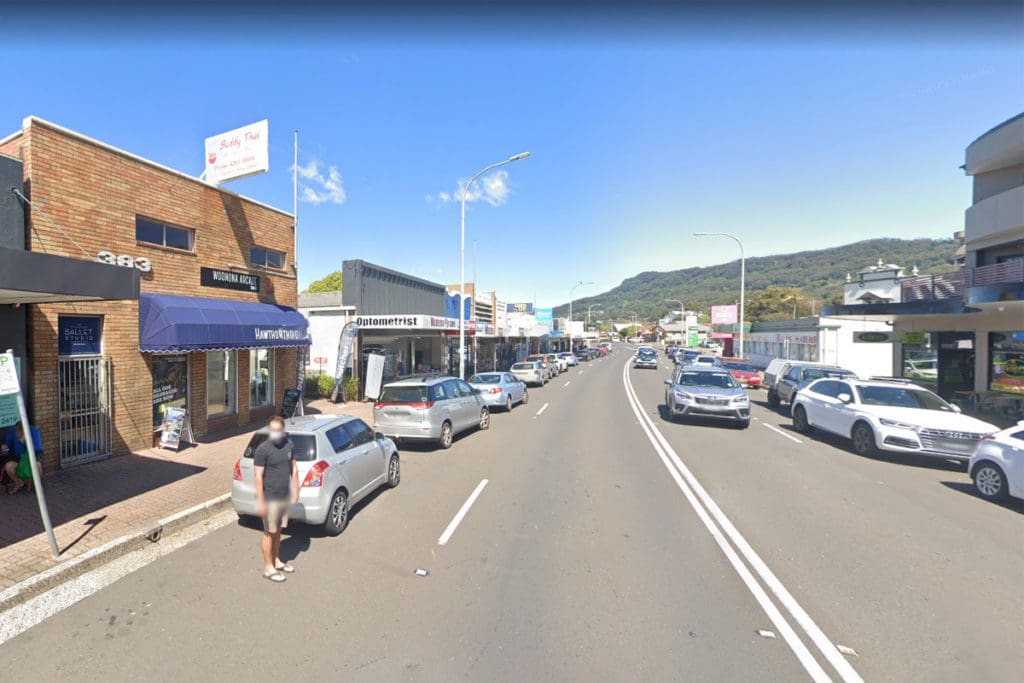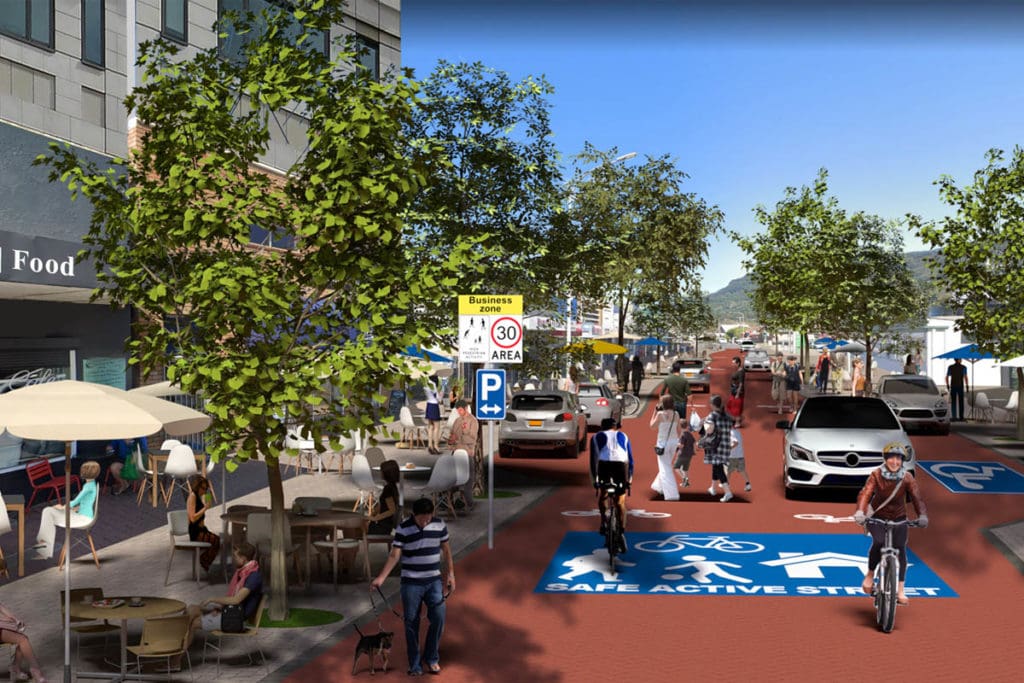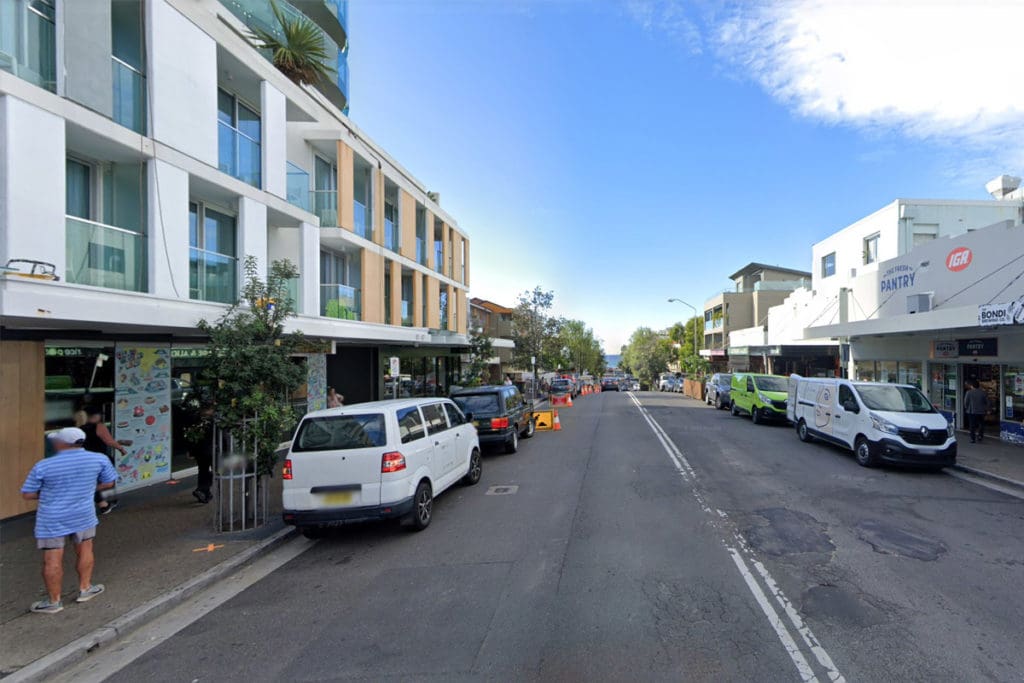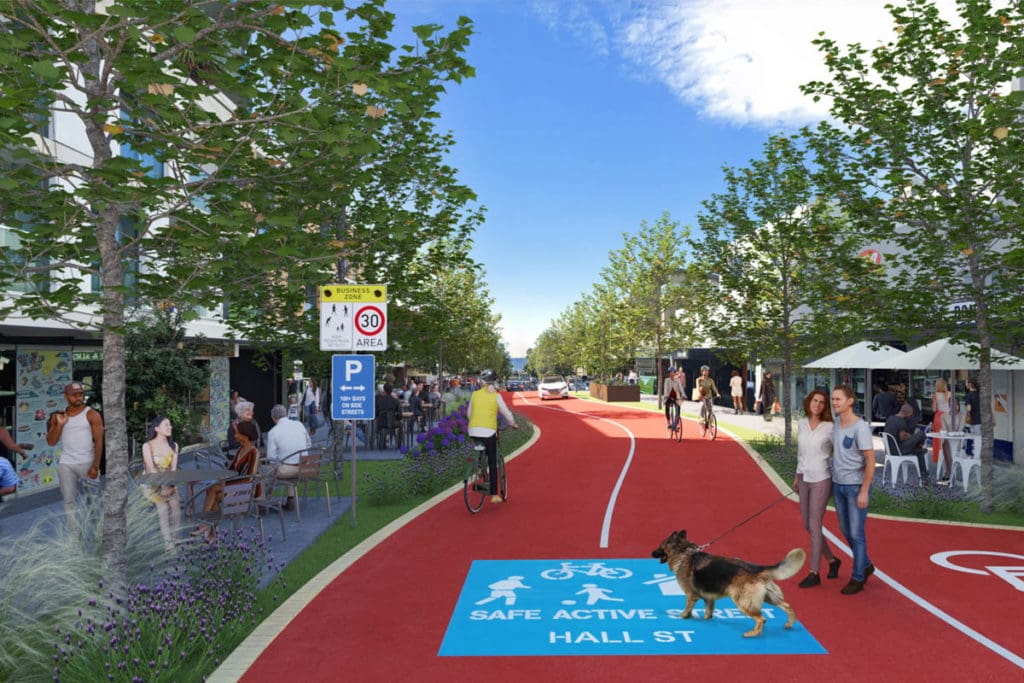Reimagining Australian Car-Centric Shopping Streets

Perth, WA
Ten of Australia’s ‘car-centric’ shopping streets have been reimagined as people-friendly open spaces, with a greater emphasis on active transport, in a study involving the University of Western Australia and Curtin University.
The recent study created artist’s impressions of commercial streets in cities throughout Australia, to “illustrate the benefits of reallocating space to people … to shoppers, diners, riders, children, prams and the mobility-impaired”.

“Typically, a car transports just one or two customers. A parked car occupies about 13 square metres,” according to a report on the study recent published on The Conversation website.
“In the same space, 20 shoppers can be walking, 12 diners can sit outside a cafe, or 12 customers can park their bikes.”
The study reimagined:
- Chapel Street, Windsor, Melbourne, Victoria
- Beaumont Street, Hamilton, Newcastle, New South Wales
- Darby Street, Newcastle, Newcastle, NSW
- Hall Street, Bondi, Sydney, NSW
- Princes Highway, Woonona, Wollongong, NSW
- Belvidere Street, Belmont, Perth, Western Australia
- Oxford Street, Leederville, Perth, WA
- Parklet, South Terrace, Fremantle, Perth, WA
- South Terrace, Fremantle, Perth, WA
- Musk Avenue, Kelvin Grove, Brisbane, Queensland


“Think of a typical Australian shopping street: parked cars occupy the prime public space in front of the shops. But we could instead create a place that’s good for business and is beautiful too. It would attract customers while being good for our physical, mental and social health,” the report says.
“Before re-imagining the streets, we calculated that car parking (27%) and travel lanes (46%) took up nearly three-quarters of the street space.
“Reducing car parking and travel lanes allowed us to increase green space (up 18%), seating (up 17%) and footpaths (up 6%) in our re-imagined streets.


“Encouraging motorists to park on neighbouring side streets or in off-street car parks can free up space for people. In any case, motorists rarely find parking right out the front of a shop — the (rising) number and size of cars makes that impossible.
“Switching to other modes of transport for short journeys to the shops is another option.
“More than half of city car journeys are shorter than 5km — and many are even shorter. Ongoing under-investment in safe walking and cycling means Australians feel forced into driving short distances, even though they might prefer to walk or cycle.”
The report suggested the transformations would help retail streets better compete with larger shopping centres for patrons.
